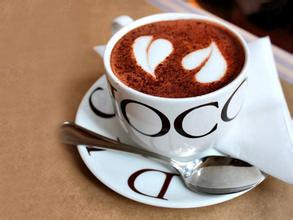Description of Peruvian Coffee Flavor characteristics of Grinding degree introduction to the taste of varieties treated in producing areas
Peruvian coffee cultivation history is not long, but as a rising star, Peruvian coffee is gradually opening up its popularity and entering the international market.
Peru is located in western South America, with a coastline of 2254 kilometers. The Andes runs from north to south, and the mountains account for 1% of the country's area. it belongs to the tropical desert region with a dry and mild climate. Peruvian coffee is mostly grown at the foot of the Andes, where it is rich in traditional Central American top coffee beans.
Peruvian coffee beans are best known for their coffee beans from Chimacha Mayou in the middle and Cusco in the south. In addition, some areas in northern Peru also produce characteristic organic coffee. Organic coffee is made of beans grown in the shade of trees. Although the yield of coffee beans is not high because of the method of planting in the shade, its quality can reach the level of gourmet coffee. This is because shading trees can slow down the ripening of coffee trees, help coffee grow fully, make it contain more natural ingredients, breed better flavors, and reduce caffeine content.
The annual output of this kind of coffee is less than 2000 kilograms, and most of it is exported to the United States, with an annual export of more than 1400 kilograms. A cup of coffee in the United States costs 60 US dollars, and the price of one kilogram is as high as 1400 US dollars. Even a small cup in a coffee shop in Peru costs more than $10, which is the most expensive coffee in the world.
The reporter tasted the raccoon dung coffee and chose the American production method, so that the coffee taste will be relatively pure. The first sip feels that the coffee taste is very strong, slightly bitter, with a little sugar, the taste becomes much softer, and the aroma of the coffee in the mouth lasts long after drinking. A woman who bought coffee beans next to me told me that adding some wine would taste better-maybe everyone likes it differently.
Raccoon is a coffee factory.
This gourmet coffee from the Amazon region of Peru can not become the most expensive and delicious coffee without a long-billed raccoon that lives in South America at an altitude of 1800 to more than 4000 meters. This raccoon is small, about the size of a domestic cat and has a long mouth. The raccoon loves to eat fresh and fragrant fruit very much. After the raccoon carefully chooses and eats the ripe fresh coffee fruit, it is digested through its intestines and stomach, coffee peel and meat, and the coffee bean is fermented in the raccoon's intestines and stomach because it is indigestible. As a result, the protein of the coffee bean is destroyed, so that the bitter taste of the coffee bean decreases, and then it is excreted out of the body. After manual washing and baking, the coffee produced has a different taste. It has become a hot item in the international market. What makes it unique is that a series of procedures, such as peeling the machined coffee fruit, are magically completed in the raccoon stomach and intestines for 4 to 6 hours. Absolutely natural.

Important Notice :
前街咖啡 FrontStreet Coffee has moved to new addredd:
FrontStreet Coffee Address: 315,Donghua East Road,GuangZhou
Tel:020 38364473
- Prev

Flavor description treatment of Jamaican Blue Mountain Coffee introduction to varieties of High-quality Coffee beans
In 1950, the Government of Jamaica established the Jamaica Coffee Industry Committee (the Jamaica Coffee Industry Board), which sets quality standards for Jamaican coffee and oversees the implementation of quality standards to ensure the quality of Jamaican coffee. The committee awarded a special official seal to raw coffee and roasted coffee exported from Jamaica, which is the highest level of national coffee in the world.
- Next

Description of the flavor and taste of civet coffee introduction to the characteristics of high-quality coffee beans
The civet likes to choose the most ripe, sweet, juicy coffee fruit in the coffee tree as food. The coffee fruit passes through its digestive system, and only the pulp on the outside of the fruit is digested, and the hard coffee beans are then excreted intact by the civet's digestive system. In this way, in the process of digestion, there are unparalleled magical changes in the flavor of coffee beans.
Related
- Detailed explanation of Jadeite planting Land in Panamanian Jadeite Manor introduction to the grading system of Jadeite competitive bidding, Red bid, Green bid and Rose Summer
- Story of Coffee planting in Brenka region of Costa Rica Stonehenge Manor anaerobic heavy honey treatment of flavor mouth
- What's on the barrel of Blue Mountain Coffee beans?
- Can American coffee also pull flowers? How to use hot American style to pull out a good-looking pattern?
- Can you make a cold extract with coffee beans? What is the right proportion for cold-extracted coffee formula?
- Indonesian PWN Gold Mandrine Coffee Origin Features Flavor How to Chong? Mandolin coffee is American.
- A brief introduction to the flavor characteristics of Brazilian yellow bourbon coffee beans
- What is the effect of different water quality on the flavor of cold-extracted coffee? What kind of water is best for brewing coffee?
- Why do you think of Rose Summer whenever you mention Panamanian coffee?
- Introduction to the characteristics of authentic blue mountain coffee bean producing areas? What is the CIB Coffee Authority in Jamaica?

